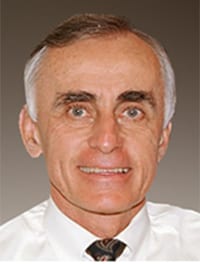ACA has announced that Professor Donald C. Sundberg, director, Nanostructured Polymers Research Center at the University of New Hampshire, will deliver the Mattiello Memorial Lecture at the American Coatings CONFERENCE (ACC), April 11–13, 2016 in Indianapolis, IN. Held in conjunction with the American Coatings SHOW, April 12–14, the ACC is the leading scientific event for the coatings industry. The conference is hosted by ACA in collaboration with Vincentz Network.
Sundberg will present the Mattiello Lecture, “Towards an Understanding of How Complex Latex Particles Are Formed: What Do We Know and When Did We Know It,” on Wednesday, April 13, from 8:30—9:30 am.
In his presentation, Sundberg will explain that today there is a great variety of synthetic latices composed of nano-particles that are homogeneous, structured, hollow, multi-lobed, or hybridized with other materials. They have huge specific surface areas, which presents opportunities for special surface chemistries, but also challenges for colloidal stability. Made with as many as five or more monomers resulting in polymer chains that may be linear, branched, grafted, and/or crosslinked, these chains are “born” in the water and “die” in the particles. According to the Sundberg, searching for the chemical and physical mechanisms that determine the final properties of the latex has involved the application of organic and physical chemistry, surface chemistry, reaction kinetics, thermodynamics, molecular diffusion, and engineering.
The presentation will focus on what is known about these mechanisms, what tools are used to assist in learning about them, and when during the past 75 years we decided we understood some of these mechanisms.
Background
In addition to his role as emeritus professor of Materials Science with the University of New Hampshire, Sundberg is the founder and president of Emulsion Polymers Consulting and Education, LLC, which provides consulting services and continuing education for technical personnel in the coatings industry.
He received a bachelor’s degree in chemical engineering from Worcester Polytechnic Institute in Massachusetts and a Ph.D. from the University of Delaware.
Sundberg spent five years working on impact modifiers for ABS polymers with the Monsanto Company prior to pursuing an academic career, first at the University of Idaho and then at the University of New Hampshire where, in addition to his faculty role, he was vice president for Research. He was named professor of Materials Science in 2006.
Sundberg is recognized for a wide range of accomplishments, particularly in the area of latex particle morphology. He was one of the first to consider how interfacial interactions at the latex polymer–water interface affected the partitioning of polymers in two-component and multi-component latex particles. He showed how different stabilizing species affected these energies and promoted formation of different morphologies (core-shell, half-moon, dispersed droplet). Sundberg is considered a pioneer in providing an understanding of the factors that affect formation of non-equilibrium morphologies. He and his group have made significant contributions to the literature on this subject. In addition, the Sundberg group has been credited with developing analytical tools to characterize latex particle morphology and to study particle morphology development as the synthesis proceeds.
Accomplishments
Elected a NASA Fellow (1965–1968) and a member of the International Polymer Colloids Group (1983), Sundberg served as chairman for the 1997 Gordon Conference on Polymer Colloids, and was the recipient of a prestigious Roon Award from FSCT in 2004. He is a member of the ACS Division of Polymer Chemistry and Division of Polymeric Materials: Science and Engineering, as well as the American Coatings Association. A sought-after lecturer, Sundberg also serves as a reviewer for many scientific referred journals and research proposals. He has three patents and has authored or coauthored a wide range of publications and articles.
Research interests include emulsion polymers, phase separation during polymerization reactions, diffusion controlled polymer reactions, reactive processing of polymers, and property development in polymer composites.
For more information about the American Coatings CONFERENCE 2016, visit paint.org/american-coatings-show.
